This list of 11 best things to do Faroe Islands contains affiliate links.
Although I searched endlessly for best things to do in Faroe Islands before my own visit in 2015, I could find very little by way of traveller-friendly guides.
Consequently, and as I made my way to these magical islands one stormy September afternoon, I had very little idea what to expect. They remained a destination shrouded in mystery – a place enveloped in rolling sea mist, ancient folklore and closely defended traditions.
A few years later, however, and the Faroe Islands have transformed into something of a social media sensation; photos of the Islands’ thundering waterfalls, turfed roofs and glacial lakes filling our feeds. Unsurprisingly, tourism to the islands has increased exponentially as adventurers seek out its arresting landscapes and hidden bays.
Given this influx of visitors, I thought it might be helpful to pull together a comprehensive list of what to do on the Faroe Islands.
Although small, these remote Islands hide an almost endless number of things to see and do – offering an adventure like no other.
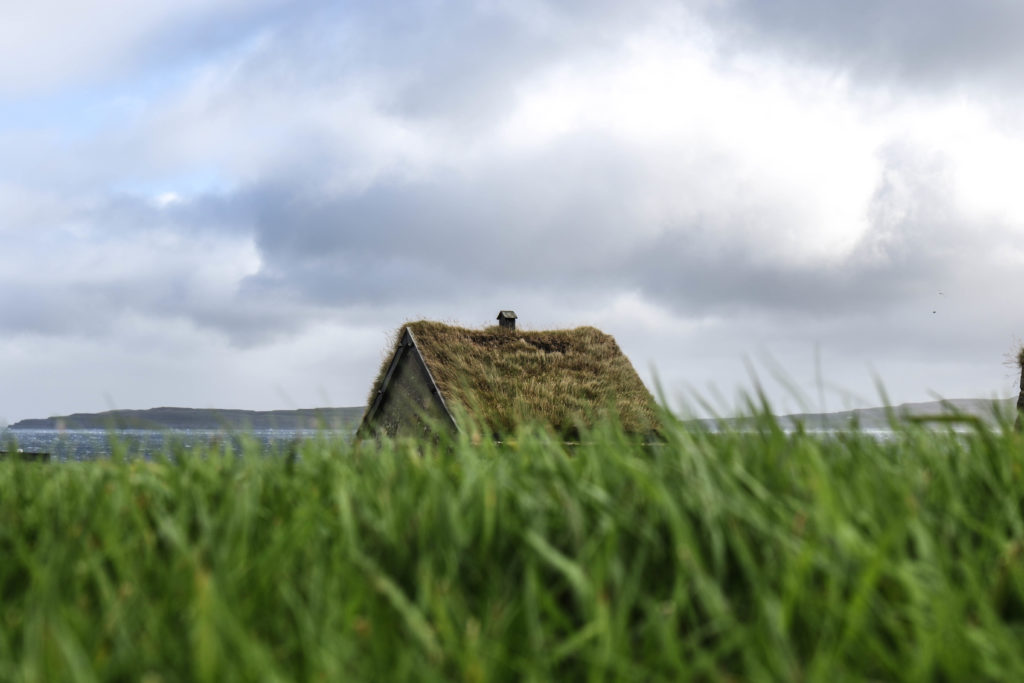
11 Best Things to do Faroe Islands
1. Explore Tórshavn & Historical Tinganes
After preparing for a few different weather systems (think rain, sunshine and fog), head out for a morning exploring the Faroe Islands’ capital, Tórshavn.
Definitely topping the list of what to do Faroe Islands, this pretty little harbour town is home to the Prime Minister’s office (you can knock on the window and wave), the nation’s Parliament, a busy shipping port, beautiful boutiques and some award-winning restaurants.
Filled with coloured wooden homes and traditional turfed cottages, it’s an easy (and beautiful) introduction to Faroese culture.
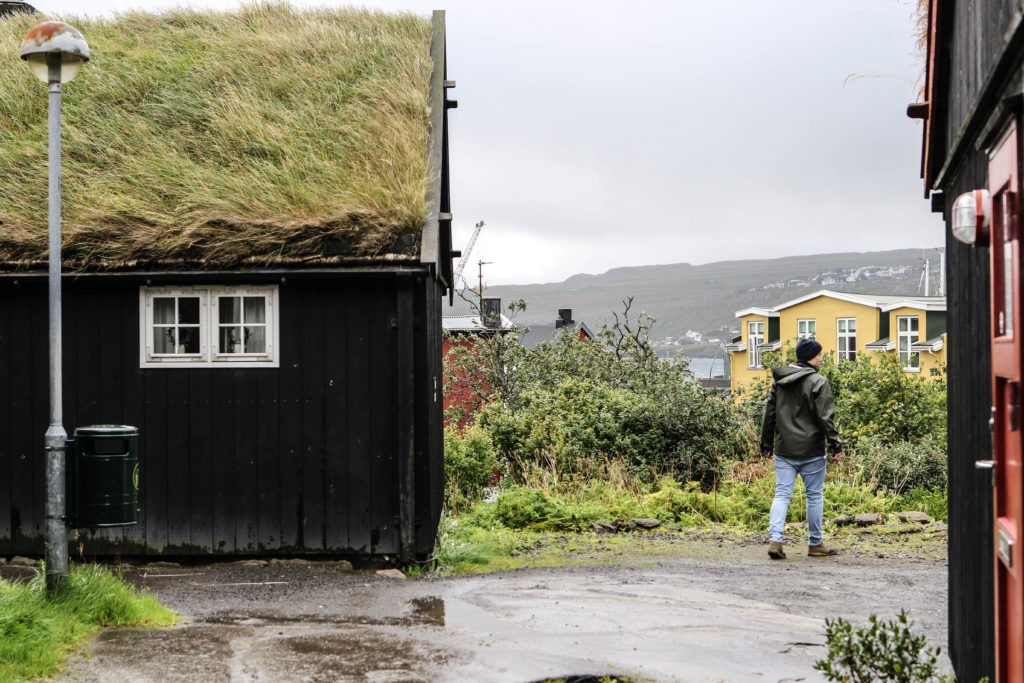 Our first stop was the historical quarter of Tinganes (meaning ‘parliament point’) with its handsome buildings dating back to the 17th century. It’s also the spot where the Faroe Islands’ Parliament has been held for over 1,000 years.
Our first stop was the historical quarter of Tinganes (meaning ‘parliament point’) with its handsome buildings dating back to the 17th century. It’s also the spot where the Faroe Islands’ Parliament has been held for over 1,000 years.
Here, winding streets filled with cottages as high as your shoulder surrounded you; their windows filled with carved wooden ornaments and pretty net curtains. Cats prowl the lanes, hiding amongst flower pots and colourful bikes and porcelain fish decorate each building.
It’s a truly beautiful area and one you’ll want to bring your camera to.
2. Experience Faroese Design
Perhaps not always making the headlines when it comes to things to do Faroe Islands, experiencing the beautiful Faroese arts and design culture is a must.
The Faroe Islands are a nation that love their arts and crafts. Famous for their penchant for knitting, the old Faroese proverb – “Ull er Føroya gull” – literally translates to ‘wool is gold’ and remains an important source of income for the Islands.
As such, shops filled with intricately knitted jumpers can be found throughout the capital and wool is used by many native artists within their work.
The visual arts are also on the rise across the islands, with venues such as The Nordic House (in Tórshavn) showcasing the work of local artists. Additionally, make sure you pay a visit to Listasavn Føroya, to view the works of the most beloved Faroese artists.
Steinprent, a beautiful lithography studio in Tórshavn, is also definitely worth visiting.
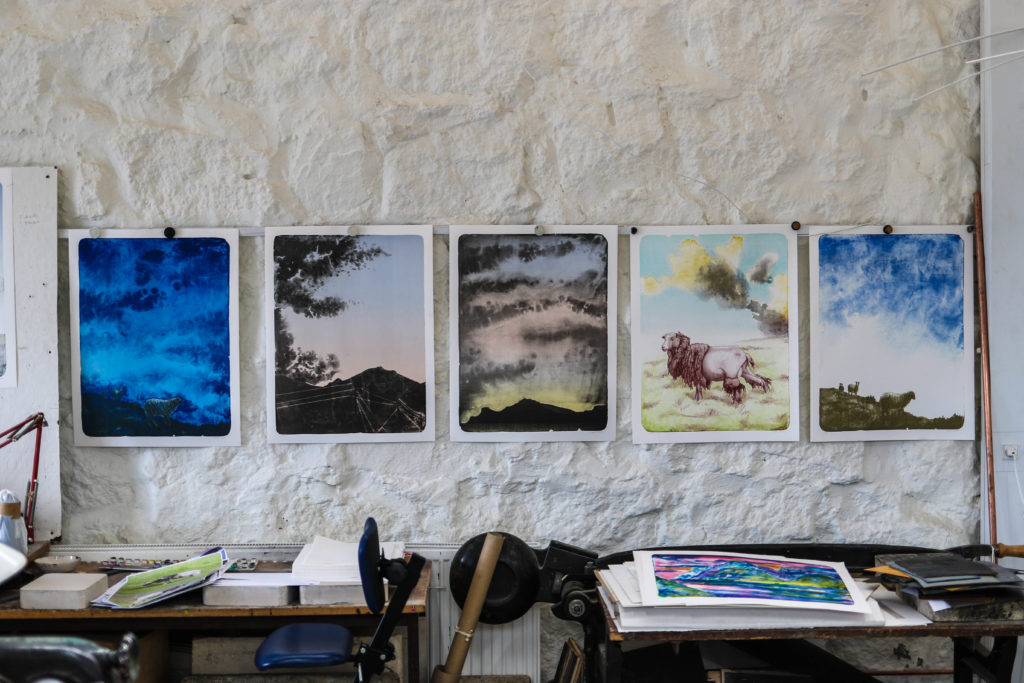 A Mecca for artists across Europe, this wonderful Studio offers creatives access to ancient lithography stones.
A Mecca for artists across Europe, this wonderful Studio offers creatives access to ancient lithography stones.
When we visited Steinprent, this warm ancient space smelt of limestone and paint. Walking upstairs and we were met with a large, light studio, filled with colourful prints, sculptures and workstations. In the middle stood an enormous German Press; used during the printing process. It was carefully explained to us that during the lithography process, artists sketch directly onto limestone slabs, before ink is added and the print is pressed onto paper.
For anyone interested in anything remotely arty – or in lithography specifically – I’d absolutely recommend visiting this Studio. It was (unexpectedly) one of my favourite things to do on the Faroe Islands.
3. Visit Kirkjubøur
A short drive from Tórshavn is Kirkjubøur: home to the magnificent Magnus Cathedral built in 1300, Saint Olav’s Church and the world’s oldest inhabited wooden house, Kirkjubøargarður.
As we arrived, a watery sunlight pushed its way through the clouds, making the neighbouring sea glitter and Olav’s Church shine brightly. There wasn’t another soul in sight as we made our way over to Magnus Cathedral; just the sound of the sea and diving seabirds.
It was incredibly peaceful.
Perhaps my favourite spot here was Kirkjubøargarður, the old wood cabin. Unbelievably warm and quiet, the only sound filling this ancient space was the creaking floorboards beneath us. The home was furnished as it would have been in the 11th century, filled with traditional cookery tools and decorations.
It’s in this cabin that Bishop Erlendur wrote his now famous Sheep Letter in 1298. This is the earliest document belonging to the Faroe Islands and (unsurprisingly) concerns sheep breeding.
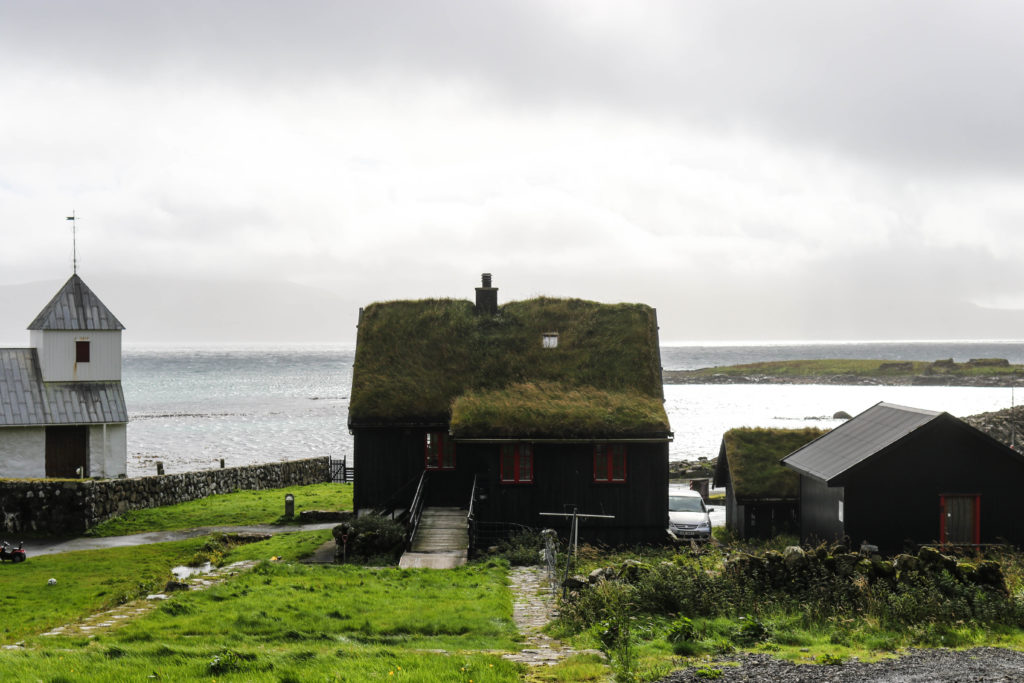
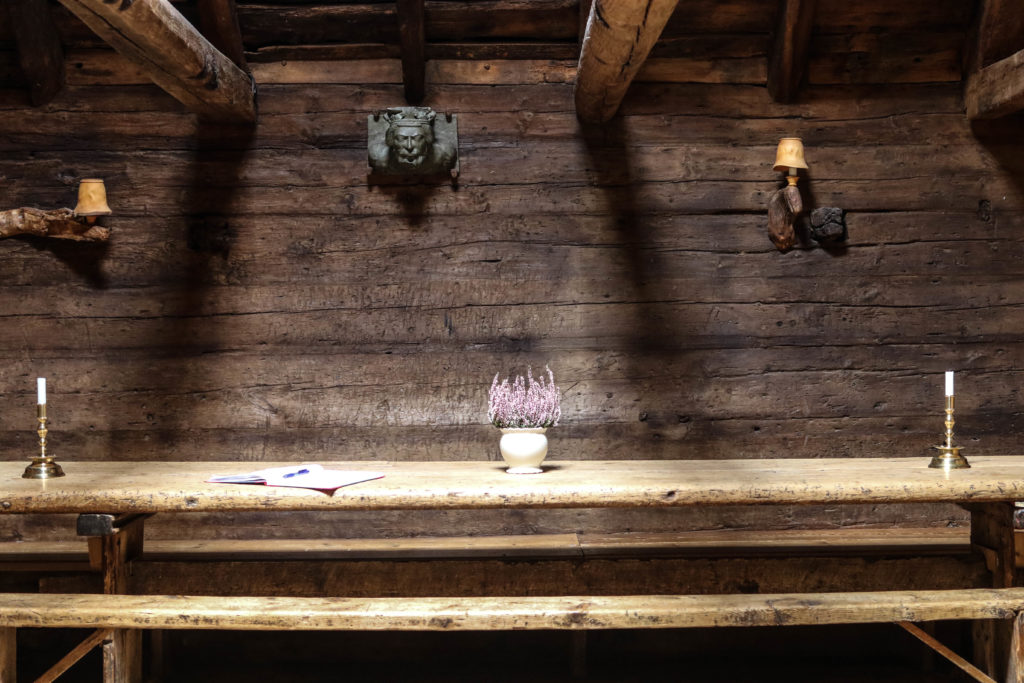 Although visiting Kirkjubøargarður may not top most lists of top things to do Faroe Islands, believe me when I say this is an utterly beautiful place to visit – and makes for a very humbling experience.
Although visiting Kirkjubøargarður may not top most lists of top things to do Faroe Islands, believe me when I say this is an utterly beautiful place to visit – and makes for a very humbling experience.
4. Pay a Visit to a Witch & a Giant
Risin and Kellingin, the Islands’ resident witch and giant, are not difficult to find. Stranded off the coast of the island of Eysturoy, both can be found next to the great cliffs of Mount Eiðiskollur.
According to Faroese folklore, this giant and his wife (originally from Iceland) were apparently on a mission to steal the Faroe Islands. After successfully managing to loop a rope around part of the mainland, Risin and Kellingin pulled as hard as they could – hoping to drag the nation on their backs, back to Iceland.
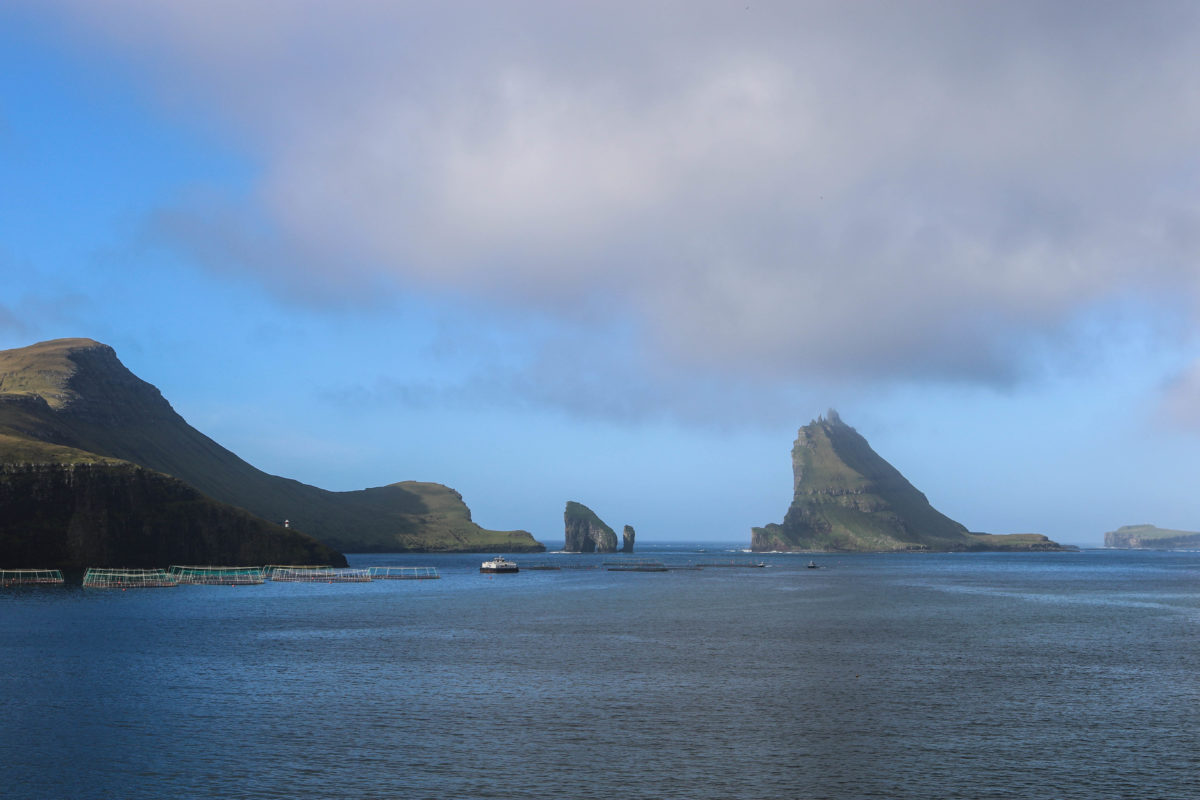 Yet, their plan was thwarted when the mountain fractured. Despite working through the night, the sun eventually rose and Risin and Kellingin’s fate was sealed: they were instantly turned to stone.
Yet, their plan was thwarted when the mountain fractured. Despite working through the night, the sun eventually rose and Risin and Kellingin’s fate was sealed: they were instantly turned to stone.
Standing in the sunshine, overlooking mount Eiðiskollur, you can clearly see what is said to be the witch and the giant, looking longingly back towards Iceland. With the mountain’s tip resembling a witch’s hat and the enormous bulky giant ahead of her, this is a wonderful spot to visit – especially with kids.
5. Visit the Múlafossur Waterfall in Gásadalur
One of the most photographed spots on the Faroe Islands, Múlafossur is a mesmerising cascade of crashing water, falling from the greenest of cliffs into the bluest of waters. Perched above them is the picturesque village of Gásadalur, which is also worth exploring.
Gásadalur – or ‘Goose Valley’ – can be found on the west coast of the island of Vágur, sitting snugly at the base of the Árnafjall mountain (rising some 722 metres high). Permanently shrouded in swirling sea mists and low-lying clouds, the residents of this village could, until 2004, only access their homes by undertaking a strenuous 5k walk over the surrounding mountains.
However, in 2006, a tunnel was blasted through the dense rocky mountains, finally linking Gásadalur with the rest of Vágur.
Arriving in Gásadalur, we parked in the small car park created purposely for visitors; complete with a toilet that reminded me of a small alpine lodge. You’ll also find a small cafe nearby – Gásadalsgarður – serving coffee, cake and some delicious lunch options (be warned, this cafe is also linked to a slaughterhouse). In fine weather, guests can sit out on the cafe’s patio and enjoy the incredible scenery.
From here, the waterfall is not difficult to find. The viewpoint is just before arriving in Gásadalur, at the end of a gravel trail that runs from the main road.
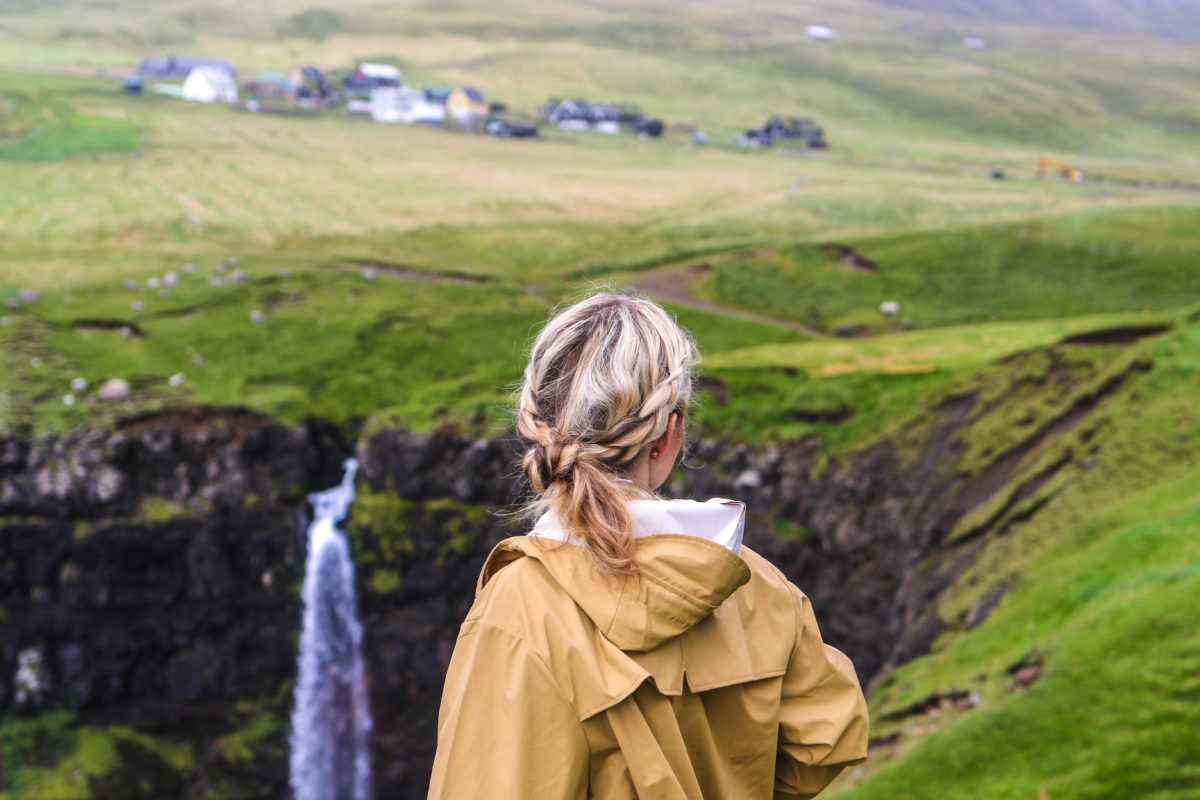 Unsurprisingly, the scene you’ll find at the end of this path is unimaginably beautiful. In fact, it looks almost artificial; faked by a Nat Geo photographer, or something.
Unsurprisingly, the scene you’ll find at the end of this path is unimaginably beautiful. In fact, it looks almost artificial; faked by a Nat Geo photographer, or something.
If goes without saying that a visit to Múlafossur really is one of the best things to do on the Faroe Islands.
6. Visit Magical Saksun
In terms of what to do on the Faroe Islands, a visit to Saksun is definitely one.
Found on the island of Streymoy, the journey takes around forty minutes from Tórshavn, weaving its way through the Islands’ proudly named ‘Buttercup Route’.
This scenic drive is filled not only with delicate yellow flowers, but winding mountain roads, wooden bridges and hidden cottages – it’s just beautiful.
When we arrived in Saksun, a small hamlet of cabins and a glistening white church greeted us. Ahead lay a narrow valley – home to an inky black lagoon, with towering mountains and hills surrounding it. It was a truly spectacular sight and definitely one of the most beautiful places on the Faroe Islands.
Aside from its beautiful views, there is a small farmhouse museum in Saksun, an open church and some beautiful coastal walks (although do be careful of the tides). Just 11 people live in this small hamlet, so it really is incredibly remote.
Come for the views and a moment to lay on one of the hillsides, watching as wild ponies graze nearby.
7. Dinner at Áarstova
The Faroe Islands has an incredibe foodie scene and Áarstova is definitely one of the best places to eat in Tórshavn, if not on the entire Islands.
A beautiful lamb and seafood restaurant set inside a traditional turfed cottage, this beautiful restaurant is filled with flickering candles, creaking wooden boards and plenty of taxidermy.
When we visited, we shared an enormous leg of salted lamb, piles of buttered potatoes and plenty of red wine (the lamb is one of the Islands’ most famous dishes, so do try).
Be warned, the prices at Áarstova can be a little expensive, so perhaps stick to the prix fixe menu if you want to keep costs under control.
8. Visit the Floating Lake
Located on Vágar island is the epically beautiful Sørvágsvatn.
Appearing to hang precariously over the edge of a clifftop, this jaw-dropping lake is a popular spot to hike to, with the walk itself taking just over an hour to complete. Although not too taxing, be warned, this isn’t a hike you’d want to undertake in pouring rain (which seems to be the norm on the Faroe Islands) – so be sure to reserve this activity for a sunny day.
To get to the start of the hike, drive to the trailhead (make your way towards Miðvágur church and follow the signs to Trælanípa/Bøsdalafossur). From here, you need to follow the well-marked trail and is a 3km walk both there and back (6km in total).
When you begin to get to the top of the cliffs, hug the coastline (and watch your step) and you’ll eventually reach the iconic viewpoint of Lake Sørvágsvatn.
9. Visit Fairytale Gjógv
Regularly touted as one of the best things to do Faroe Islands, is a trip to the magical village of Gjógv.
Found on the island of Eysturoy, the drive to this sleepy hamlet more than justifies your journey; offering breathtaking views across the North Atlantic Ocean and past some of the Faroe Islands’ hidden waterfalls.
The village itself straddles a wide gorge; the frothing sea waters churning below it. Incredibly beautiful (if it’s not raining, that is) this spot offers some fantastic photo opportunities. To find the best viewpoint, pick up the narrow path to the left of the gorge in the village – until you’re looking back on it.
During the summer months, May – August, puffins nest here too and can be found in the gorge itself; so keep your eyes peeled.
10. Grab a Bite to Eat at Breyðvirkið Bakery
As a foodie, when it comes to what to do in the Faroe Islands, a trip to the delicious Breyðvirkið Bakery is something I’d definitely recommend.
Found in Tórshavn, this small little bakery is home to mouthwatering sourdough loaves and pastries – including cinnamon swirls and custard tarts.
Just one thing: be prepared to queue.
11. Book a Bird (& Puffin) Watching Boat Ride
Lastly, no list of top things to do Faroe Islands would be complete without mentioning one of the many boat tours you can take.
For most, these tours are a chance to witness some of the Faroe Islands’ rich and varied birdlife – including puffins, fulmar, guillemot and storm petrels. Most of these are found around Vestmnanna bird cliffs.
Sadly, we visited during the winter, when most of the birds had left for the year – but I would love to go back again during the summer months to witness the frenzy of birdlife that descends each year.
Some of the best boat tours can be booked via Guide to Faroe Islands, with the majority sailing throughout the summer months. These range from a quick hour long boat ride, to an epic 7 hour adventure around the Faroe Islands, including kayaking and evening cruise options.
As with most things on the Faroe Islands, these tours are not cheap, with an hour long boat ride costing around £78 per person.
Faroe Islands FAQ
Home to the oldest meeting place in the world, 70,000 sheep, 50,000 people, 3 sets of traffic lights and one Nobel Prize Winner, the Faroe Islands are truly unique.
Its name, ‘Faroe’ means ‘sheep’ and was given to the Islands by Viking settlers during the 9th century (although you’re more likely to encounter its Faroese name – Føroyar – during your stay). It’s a place that is fiercely proud of its traditions, complete with its own Faroese dialect, separate flag and 110 different bird species.
It’s also a place of spectacular beauty – of waterfalls, turfed cottages, lagoons and lakes that float atop cliff edges. It’s a place declared the ‘new Nordic food frontier’, offering diners a wealth of fresh fish, sushi, lamb and, if you fancy it, wind-dried sheep’s head.
With a history of Vikings, giants, witches, Nordic kings, Irish monks, Scottish settlers and, peculiarly, Seal People, the Faroe Islands is a destination you’ll never forget.
1. Where are the Faroe Islands?
The Faroe Islands are an archipelago of 18 volcanic islands, found northwest of Scotland and halfway between Iceland and Norway. With a population of just 50,000, these Islands are incredible peaceful. In fact, you’re more likely to encounter a wild pony, or a wayward sheep, than another human when travelling around.
2. Who Owns the Faroe Islands?
The Faroe Islands are part of the Kingdom of Denmark and are therefore ‘officially’ considered Danish. Despite this, however, the Faroese people will stress that they have their own distinct culture and traditions; including their own language (something they are incredibly proud of). They’re also not part of the EU, like Denmark is.
The Faroe Islands have their own Prime Minister and Parliament (called the ‘Løgting‘), and are able to self-govern and legislate independently from Denmark. Their language, Faroese, has its links to Old Norse, making it similar to the other Scandinavian languages of Icelandic, Norwegian, Danish and Swedish.
3. Do They Speak English on the Faroe Islands?
Yes – and perfectly so. Like most of Europe, and particularly Scandinavia, the Faroese learn English while growing up and during our own visit, we had absolutely no problem chatting with locals (which is a relief, as I’m not sure I’d like to tackle Faroese pronunciation).
4. How to Get to Faroe Islands
Despite its somewhat mythical reputation, the Faroe Islands are disappointingly easy to reach from the UK.
With its own airline – Atlantic Airways – operating (directly) to and from Edinburgh airport, travelling there is straightforward. However, be warned, this isn’t a cheap journey. Our return flights cost £264 each, with additional flights from London Luton to Edinburgh airport setting us back £90 in total. (Please note that flights only operate from March – December and just twice weekly).
It takes 1 hour 30 minutes to fly from Edinburgh to the Faroe Islands and the descent towards the islands, over the stormy Atlantic Ocean, is truly awe-inspiring.
There is only one airport on the Islands, found on the island of Vagar – a 45 minute journey by car from the capital, Tórshavn.
5. How to Get Around Faroe Islands
For anyone visiting the Faroe Islands, I’d highly recommend hiring a car.
Whilst there are a surprising number of car rental companies scattered across the islands, I’d suggest opting for one that allows you to pick your vehicle up at the airport. We used 62° N, who provided us with a Toyota Auris for four days, costing approximately £460.
For anyone nervous at the prospect of driving on the Faroe Islands – please don’t be. The Islands boast incredible road infrastructure, with the majority boasting largely empty, smooth highways. Furthermore, connecting each of the 18 volcanic islands are 3 vast, subsea tunnels, meaning you can island hop easily.
N.B. if you’re claustrophobic, it may be best that someone else drives you through these tunnels.
6. Public Transport on the Faroe Islands
If you’re visiting the Faroe Islands without a car, then it’s still possible to get around – but just be sure to plan ahead.
Probably the best way to do this is via bus, but please note that there is a reduced timetable during the winter months. The best place to plan your trip around the islands is via this website – where you’ll find the latest timetables and bus stop locations.
If you haven’t got a car, I’d definitely recommend staying in Tórshavn, where you’ll have easy access to great restaurants, shops, bars and amenities. Buses operating within Tórshavn are also completely free (look out for the red ones), which means getting around this area is cheap and easy.
For those after a more exciting form of transport, you can also travel between the Islands on the many ferries that operate in the area. The ferry timetable can be found here.
7. Best Time to Visit Faroe Islands
Given its remote location, it’s perhaps unsurprising to hear that the Faroe Islands enjoys some fairly wet and wild weather.
As with most locations, the best time to visit the Faroe Islands is the summer months – between June and August. During this time, the Islands’ undulating mountains are covered in wild flowers and daisies, and you’re less likely to encounter the famous rain that so often falls here (although, this can never be guaranteed so do come prepared).
Additionally, it’s during the summer months that the famous Atlantic Puffins come to nest, all 125,000 of them (you’ll largely find them on Mykines Island).
Thanks to its Maritime Subarctic climate, the temperatures here stay relatively mild, in both winter and summer. This means that for most, the summer will feel surprisingly cool – with a max of around 13 degrees.
While summer is genuinely the most popular time to visit the Faroe Islands, for those of you who don’t mind layering up, then winter here is nothing short of magical. Surrounded by snow-topped mountains and the sight of wood smoke pluming from cabin chimneys, winter on the Faroe Islands is magical.
Thanks to the jet stream, temperatures also stay relatively mild, dropping to around 2 – 6 degrees.
And the best bit? You might just spot the Northern Lights, too.
8. Best Place to Stay Faroe Islands
The best place to stay on the Faroe Islands is definitely in its capital – Tórshavn. Here you’ll have easy access to plenty of amenities, alongside some incredible restaurants, beautiful stores and quirky museums.
In terms of the best place to stay in Tórshavn itself, we’d highly recommend the iconic Hotel Føroyar.
A low rise hotel, set into the Islands’ rolling green hills, each room here boasts views out across Tórshavn and the foaming ocean. The brainchild of leading Danish architects, Friis & Moltke, it’s clear to see that Denmark’s love of style is shared by its Faroese peers.
Double rooms here begin at £220 per night during the high season and £160 during the low season.
9. Are the Faroe Islands Worth Visiting?
In short, yes – absolutely.
Offering something for everyone – whether that’s epic hikes, a burgeoning foodie scene or rich birdlife – the Faroe Islands really are a place like no other.
For me, they seem to encapsulate the best of Scotland, Iceland and Scandinavia – a uniquely welcoming, rugged and remote place, with plenty of distinctly Faroese character.
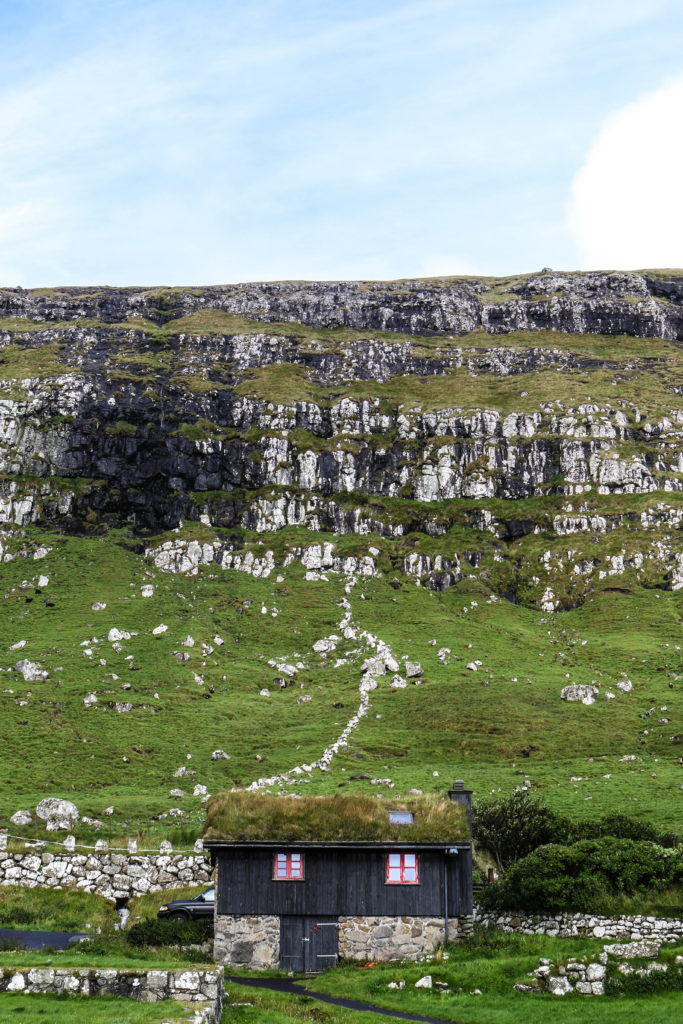



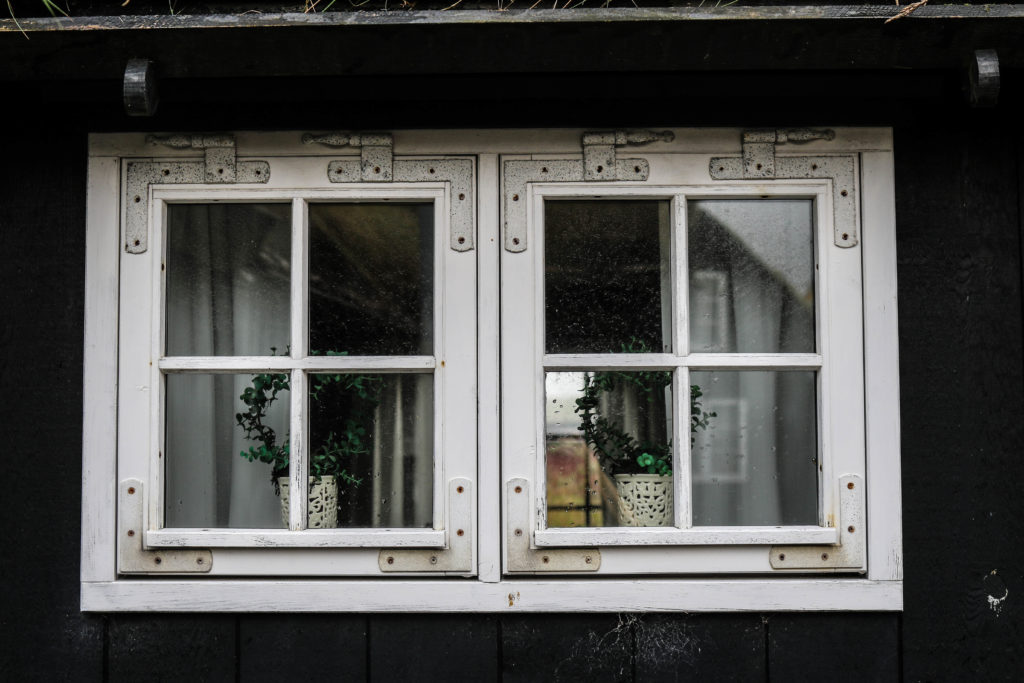
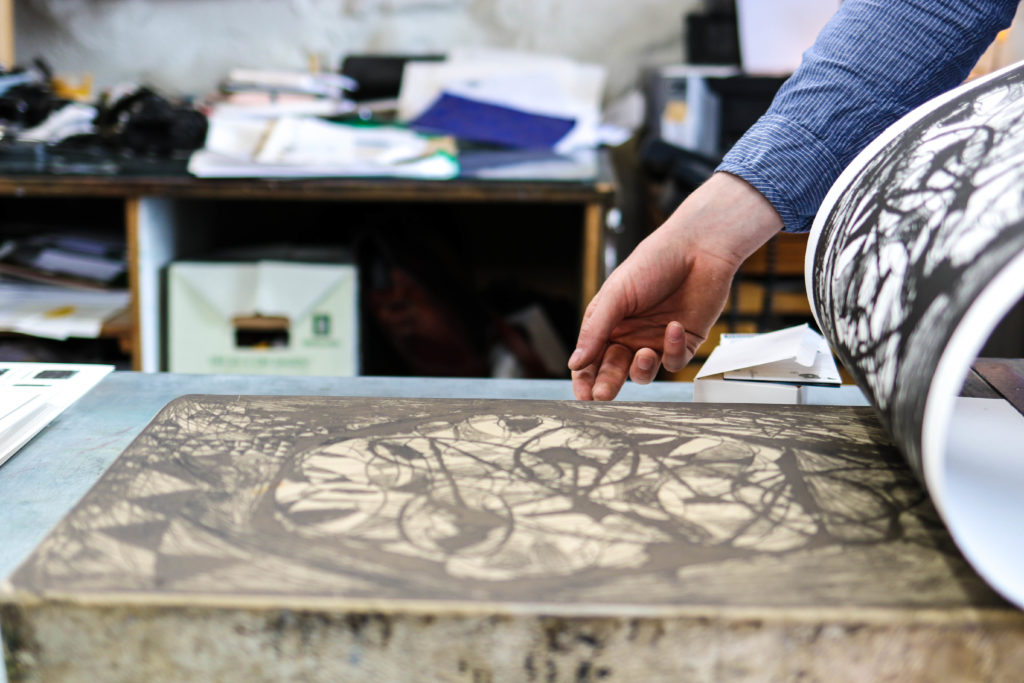




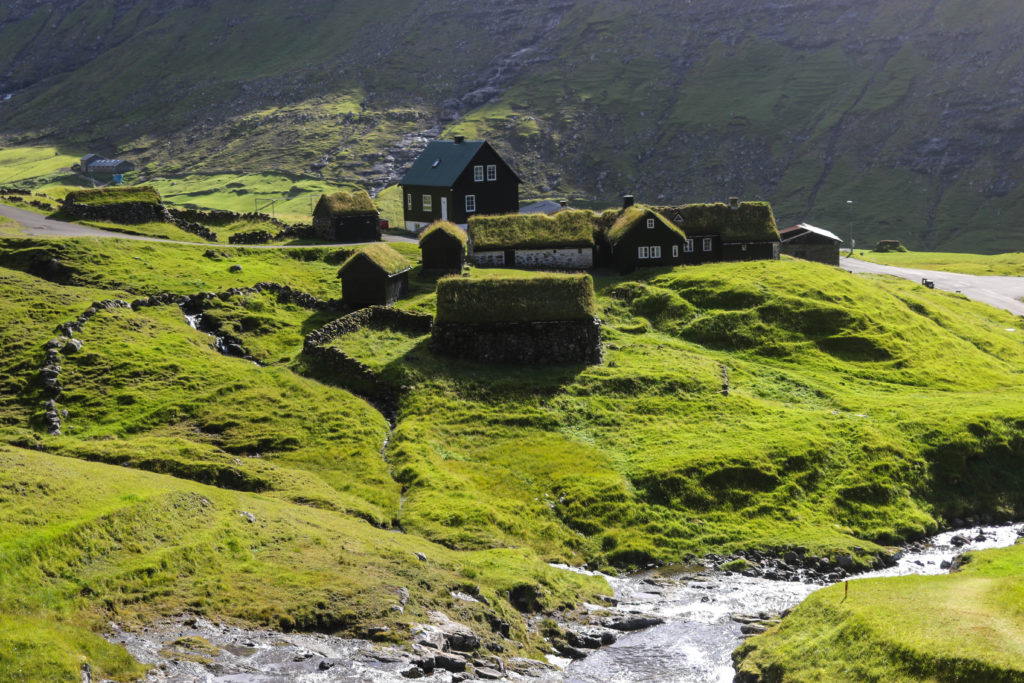
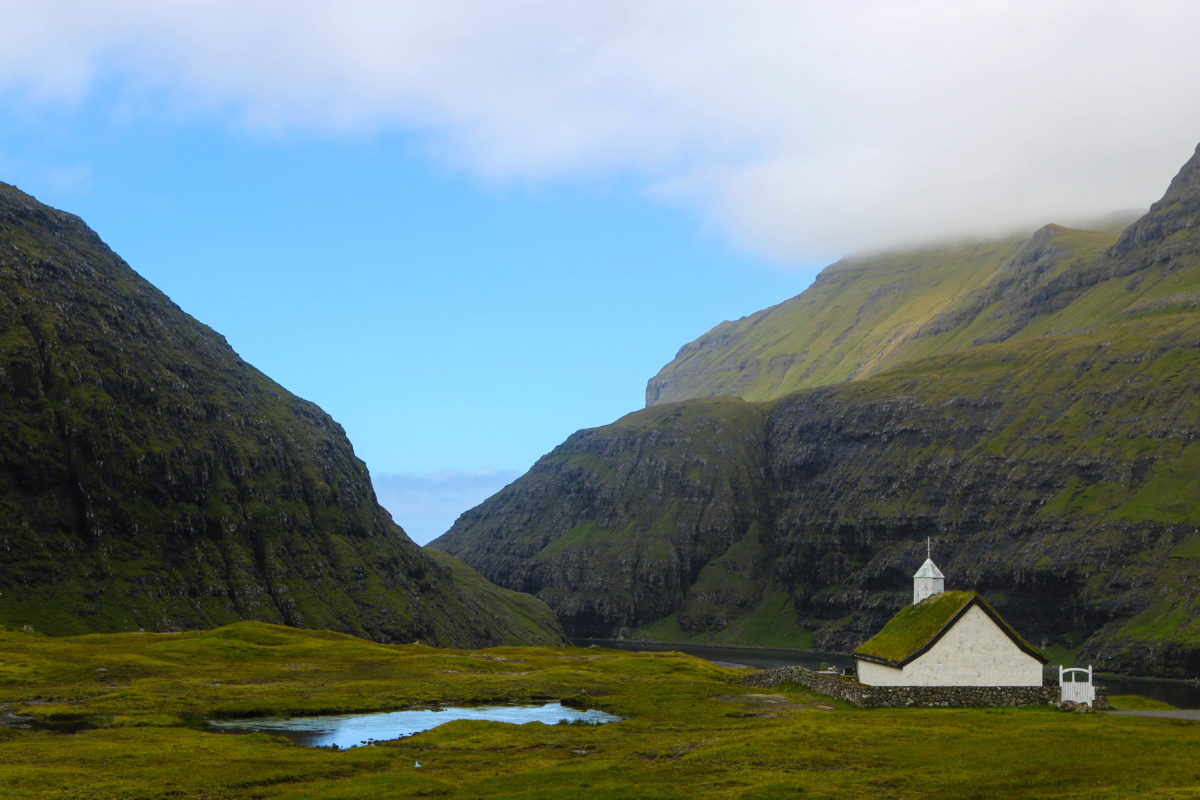
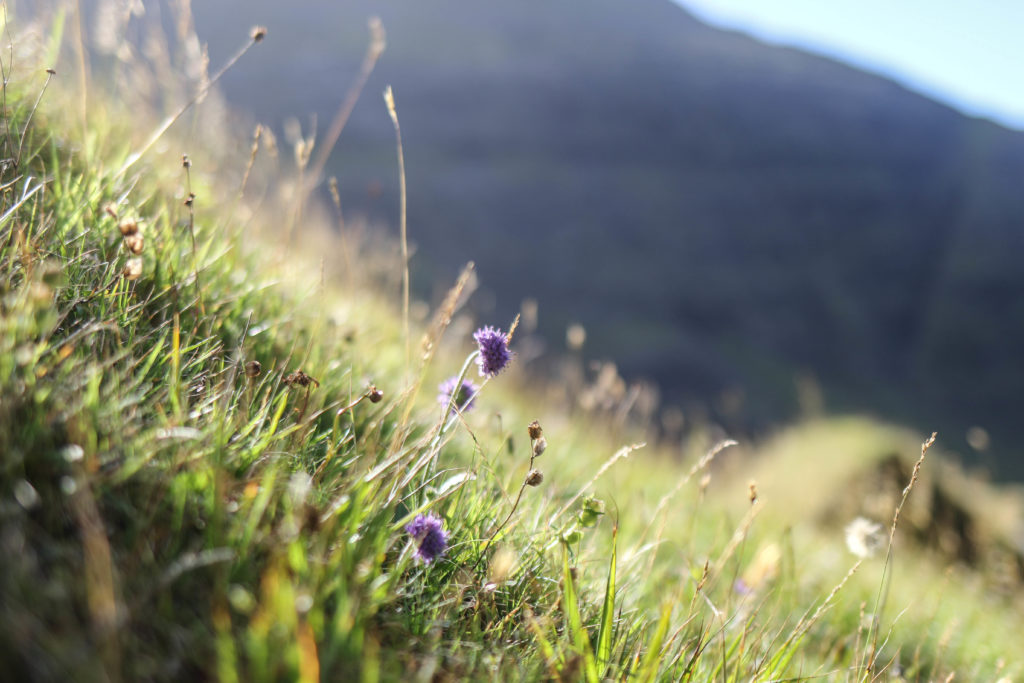
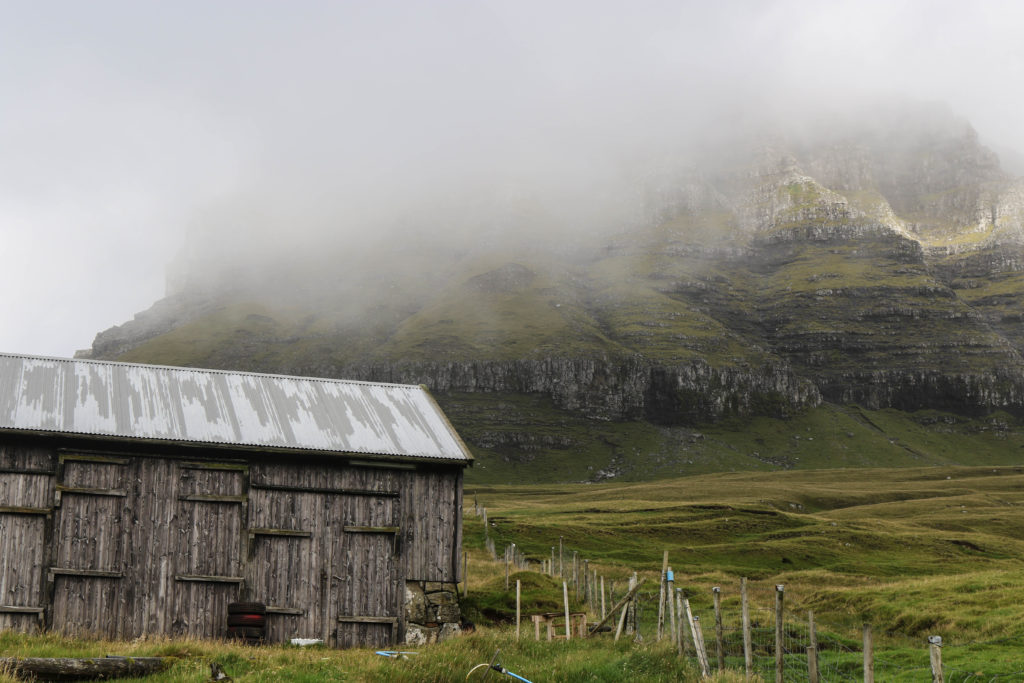
11 comments
Wow! It sounds incredible there. What a lovely description of the place. I really have to visit….
You really must! x
I loved this blog post! You really captured the magic of this amazing little spot on Earth.
Such a brilliant post – it gave me goosebumps imaging this place!
Definitely on my short list of places to visit. Thanks for sharing your experience there!
What a magical post! My parents took us here when we were children and I remember sitting in amongst the puffins on the cliffs. I would love to go back here as an adult.
Wow, what an amazing place for your parents to take you when you were little! x
I loved reading your article! I visited the Faroes (very briefly) in 2015 en route from Denmark to Iceland by boat. The islands were like dazzling green gems rising up out of the north Atlantic. Wonderful. Thanks for sharing your experiences.
Great article on a place I have wanted to go for years. It reminds me of the first trip my partner and I took together, to the Orkney Islands. The rain and winds were howling and it was a bit overwhelming until we made it to our cottage on the sea. Still going well. Planning a trip to the Faroe Islands soon.
Thanks Bill – if you love the Orkney Islands, you’ll really enjoy the Faroe Islands!
I am planning my trip to Iceland for October and have now included a side trip to the Faroe Islands! Couldn’t be more excited. I’d love it if you had any more information or tips about visiting!